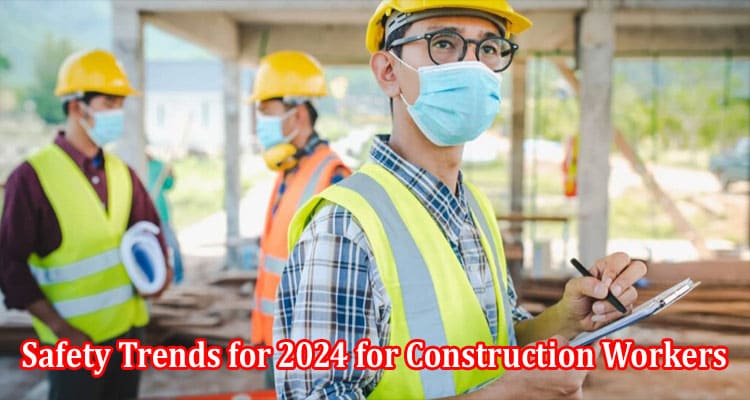Living in the era of the modern world means there are lots of new challenges and evolutions we have to consider in upcoming years. Every industry must face modern tech shifts to keep their business up-to-date and competitive in the market edge. In today’s digital world, the construction industry is incredibly growing and is at the forefront of revolution, innovation, and modernization. It even plays a significant role in building up the nation’s economy. For resources and guidance on implementing modern safety practices in the construction industry and getting OSHA online safety courses, platforms like offer valuable and affordable OSHA online training, ensuring that safety remains a priority amid technological advancements.
Everybody knows that the construction industry is one of the most hazardous sectors for workers and one of the niche industries to specialize in as an insurance broker. While significant progress has been made in improving safety, there is a constant need for innovation and adaptation to emerging technologies and challenges. However, there are several health and safety trends that are expected to shape the construction industry and also protect the well-being of its workforce. In this article, you will learn the key safety trends 2024 and strategies that are aimed at enhancing the protection of construction workers.
So, without further ado, let’s delve into this read!
Top 15 Construction Safety Trends 2024
- Advanced Wearable Technology
According to research by the US Chamber of Commerce, in 2018, only 6 percent of builders and subcontractors used wearables on building sites. It is projected that in the ensuing three years, this percentage will increase to 33%. The use of wearable technology is set to continue its growth in the construction sector.
Wearable devices can monitor various aspects of a worker’s health and safety in real time. Examples include smart helmets with integrated heads-up displays and safety sensors, exoskeletons that reduce strain on the body, and wearable trackers that monitor vital signs and environmental conditions. These technologies not only enhance worker safety but also provide valuable data for risk management and injury prevention.
- Prefabrication & Modular Technology
Prefabrication and modular construction have gained momentum over the years due to their efficiency and cost-effectiveness. In 2024, these methods are expected to become even more prevalent. Offsite construction reduces construction waste, accelerates project timelines, and increases overall quality. As the industry faces labor shortages and rising materials costs, prefabrication and modular construction offer viable solutions. The size of the modular and prefabricated construction market exceeded USD 147 billion in 2022, and from 2023 to 2032, it is projected to grow at a 6.5% CAGR.
- Role of Augmented and Virtual Reality
AR and VR technologies are increasingly being used for safety training, allowing construction workers to experience potentially dangerous situations in a controlled, simulated environment. This immersive training can significantly improve hazard awareness, emergency response, and safe practices. Additionally, AR/VR can assist in remote inspection and maintenance tasks, reducing the need for workers to be physically present in risky environments. The AR/VR market will grow to 77% between 2019 to 2023.
- Smart and Connected Buildings
The demand for smart and connected buildings is on the rise. These structures incorporate Internet of Things (IoT) technology to enhance occupant comfort and building efficiency. In 2024, more construction projects will involve the integration of smart systems, including building automation, energy management, and security. Smart buildings not only offer greater convenience but also contribute to energy conservation.
- Collaboration Technology
Effective communication and collaboration among all stakeholders are vital for a safe construction environment. Advanced project management software, communication tools, and collaboration platforms will play a crucial role in ensuring that safety information is readily available to all parties involved, allowing for quick response to safety concerns and emergencies.
Why Get OSHA Safety Training?
OSHA safety training is imperative to know about the health and safety trends to improve workplace safety. As you know that strong safety culture starts with well-trained workers who understand the importance of safety measures and compliance. In 2024, there will be a continued emphasis on ongoing safety training and awareness programs for construction workers. These programs will cover not only traditional safety practices but also the use of new technologies, emergency response, and mental health support to address the psychological aspects of workplace safety. You can register in OSHA 10 and 30 training programs and avail amazing discounts on each course.
To Wrap the Things
The construction industry in 2024 will be shaped by an array of technological, environmental, and social trends. Digital transformation, sustainable building practices, and the adoption of new technologies like 3D printing and BIM will drive innovation. At the same time, challenges like the labor shortage and workforce development will require proactive solutions. Construction companies that embrace these trends and adapt to the changing landscape will be well-positioned for success in the coming year. By staying attuned to these trends, the industry can continue to meet the evolving needs of society while building a more sustainable and resilient future.




